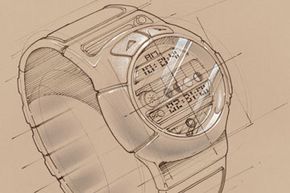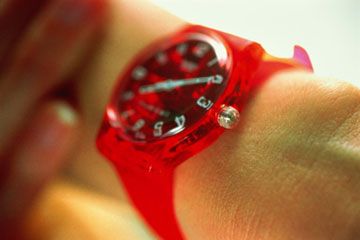When you glance down at your watch, you're probably not thinking about how different quartz and liquid crystal are from one another. And you probably shouldn't -- by the time you're done ticking off their contrasts, you might be late to your next appointment. But while quartz and liquid crystal aren't even in the same state of matter, they have one important commonality: the average digital watch or clock won't work properly without them.
Before we contrast their functions inside of a watch, let's look at some of the properties of each substance. Quartz is one of the most abundant minerals found on the surface of the earth. Known by the chemical name silicon dioxide, quartz is a crystalline solid used as a component in jewelry and sandpaper. Quartz crystals are also a common component in devices like cell phones, television receivers, and, of course, watches and clocks. One of the main reasons quartz is used in so many electronic devices is because it is piezoelectric, meaning it generates an electric charge when pressure is exerted upon it. Quartz also demonstrates a reverse piezoelectric effect: When an electric charge is applied to a quartz crystal, it begins vibrating. As we'll see, these attributes become very important when it comes to keeping time.
Advertisement
Liquid crystals, on the other hand, are not a singular substance. First discovered in the 19th century by scientists trying to determine the molecular weight of cholesterol, liquid crystals are actually a classification of compounds that comprise a fourth state of matter: The rod- or plate-shaped molecules in liquid crystals tend to flow like liquids, but maintain the alignment and order seen in solids [source: Nobelprize.org]. You've probably noticed that LCDs -- also known as liquid crystal displays -- are commonplace in computers, televisions and a host of other pieces of technology. That's because liquid crystal molecules have optic properties that can affect light when it passes through them. The first watch with a liquid crystal display appeared in 1973 [source: The New York Times].
Now that we know about the different properties of quartz and liquid crystal, let's look at how each of them functions inside of a watch.
Advertisement



